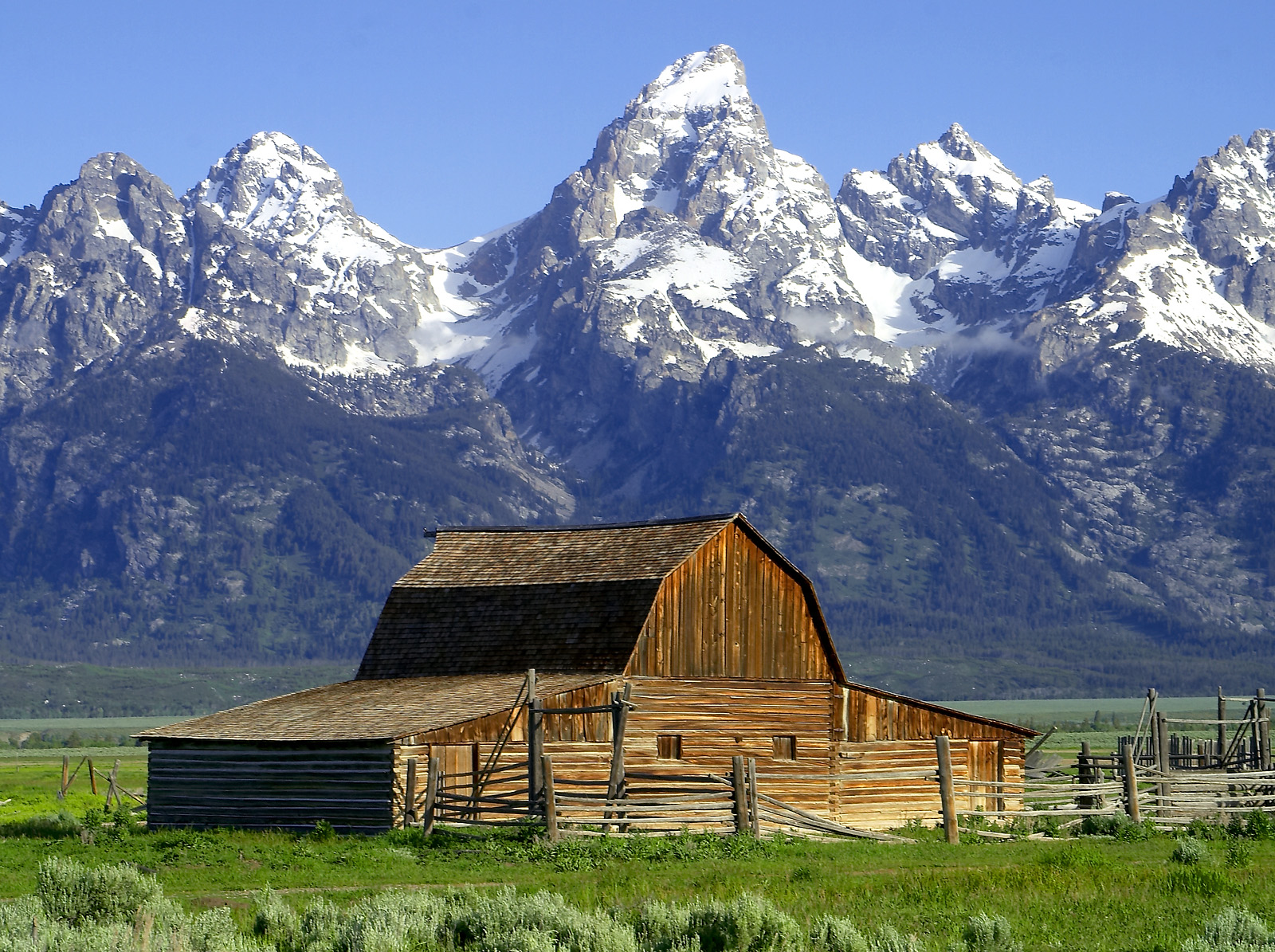
Jackson Hole
Jackson Hole (originally called Jackson's Hole by mountain men) is a valley between the Gros Ventre and Teton mountain ranges in the U.S. state of Wyoming, near the border with Idaho, in Teton County. The term "hole" was used by early trappers, or mountain men, as a term for a large mountain valley. These low-lying valleys, surrounded by mountains and containing rivers and streams, are good habitat for beavers and other fur-bearing animals. Jackson Hole is 55 miles (89 km) long by 6-to-13 miles (10-to-21 km) wide and is a graben valley with an average elevation of 6,800 ft (2,100 m), its lowest point being near the southern park boundary at 6,350 ft (1,940 m).
For other uses, see Jackson Hole (disambiguation).History[edit]
The valley was used by Native Americans for hunting and ceremonial purposes. It was not known to harbor year-round human settlement prior to the 1870s. Descriptions of the valley and its features were recorded in the journals of John Colter, who had been a member of the Lewis and Clark Expedition. After returning to the Rocky Mountains, Colter entered the region in 1807 in the vicinity of Togwotee Pass and became the first European-American to see the valley. His reports of the valley, the Teton Range, and the Yellowstone region to the north were viewed by people of the day with skepticism.
The town of Jackson was named in late 1893 by Margaret Simpson, who, at the time, was receiving mail at her home as there was no post office. She named the area in order for easterners to be able to forward mail west. Jackson, which became incorporated in 1914, was named after David Edward "Davy" Jackson, who trapped beaver in the area in the late 1820s with a partner in the firm of Smith, Jackson & Sublette.[1] Jackson, of Irish and Scottish descent, was one of the first European-Americans to spend an entire winter in the valley.[2]
Because the soil is not ideal for raising crops, the valley was used for cattle grazing, and tourism quickly became popular with the establishment of dude ranches.
Settlements[edit]
The only incorporated area in the valley is Jackson, located at its southern end. Other communities in the valley include Hoback, Kelly, Moose (Moose Wilson Road), Moran Junction, Teton Village, and Wilson. West of Jackson, Teton Pass crosses the southern end of the Teton Range, providing access to Alta on the western side of the Tetons, as well as Victor and Driggs in Idaho. This area was known as Pierre's Hole and hosted the Rocky Mountain Rendezvous in 1832. Numerous elk use the valley for grazing during the winter, and sleigh rides are offered to tourists. The Jackson Hole Mountain Resort, Snow King, and Grand Targhee Resort ski areas, as well as the nearby Grand Teton and Yellowstone national parks, are major year-round tourist attractions.




